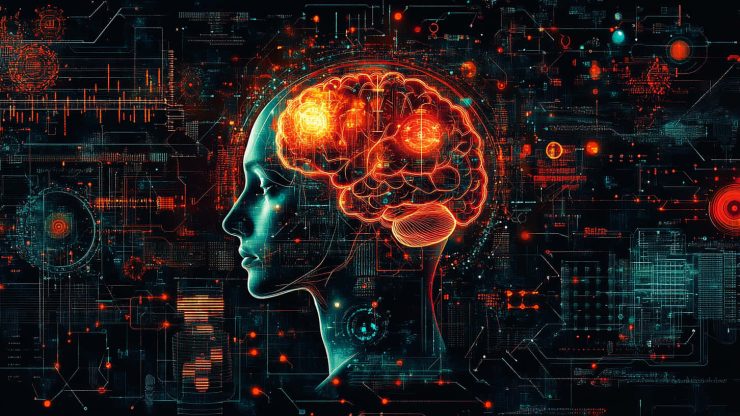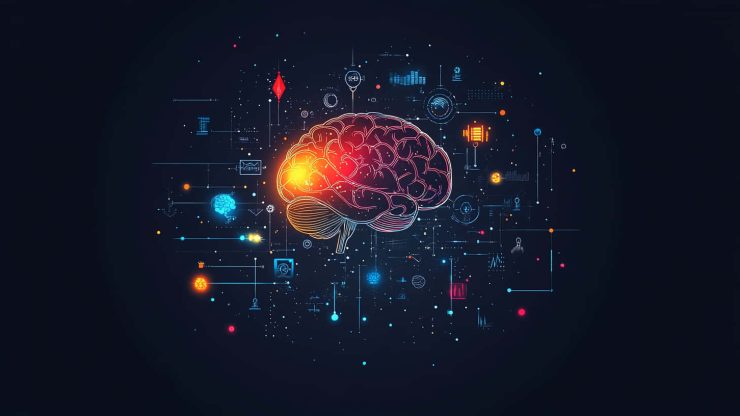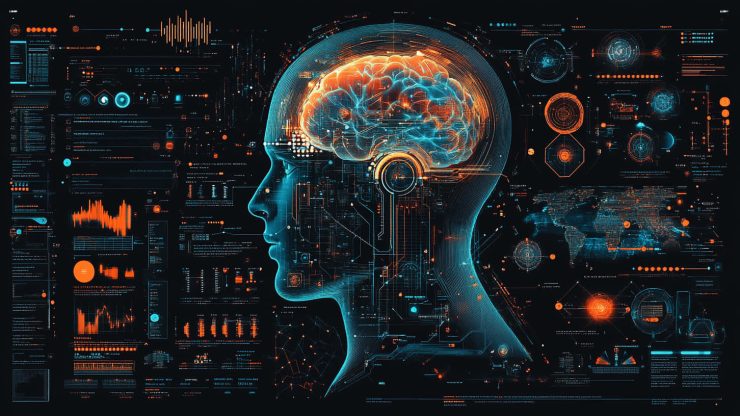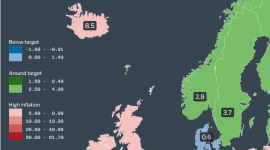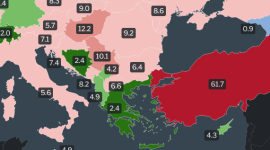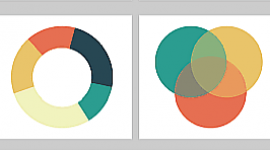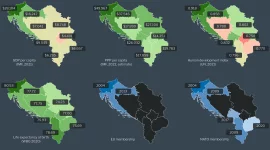Intelligence analysis involves collecting, evaluating, organizing, and sharing information to produce insights that inform decisions and shape policies. While often associated with national security or military intelligence, its applications extend to corporate strategy, journalism, law enforcement, and academic research.
Intelligence analysts turn raw data—from open sources, human agents, signals intercepts, or financial records—into meaningful information supporting strategic actions.
Context and motivation
When people think of intelligence analysis, they might imagine spies, secret missions, or high-tech surveillance. While these elements exist in some areas, much of the work is more routine: analysts work at desks, processing large amounts of information to understand complex or unclear situations. This human-centered process is naturally susceptible to errors, particularly – cognitive biases.
Cognitive biases are consistent patterns where our judgment deviates from rationality. They influence how we gather information, interpret events, and draw conclusions. If not identified and managed, these biases can undermine the quality of intelligence products, misguide decision-makers, and lead to serious consequences, from policy mistakes to failure anticipating hostile actions.
This article examines how cognitive biases affect intelligence analysis. We’ll look at various biases, provide real-world examples from politics, security, and business, and discuss strategies to reduce their impact. Understanding these biases is crucial for improving analytical accuracy and effectiveness.
Awareness of how biases operate is the first line of defense against flawed thinking, and mastery of structured analytic techniques can serve as the second.
The power of (and need for) objective analysis
At first glance, objectivity may seem like an ideal that is theoretically attainable but practically elusive.
As such, it might seem challenging to achieve, but it’s essential in intelligence analysis. Biases influence our perception of facts from the start, affecting which sources we trust and how we interpret information. They can lead us to conclusions that fit our existing beliefs and shape how we present our findings, potentially skewing higher-level decision-making.
Intelligence professionals often work with unclear signals, changing political or market conditions, and incomplete data, increasing the risk of incorrect conclusions. But reducing bias isn’t just an academic goal — it’s necessary to ensure that intelligence reflects reality, not our assumptions.
With this in mind, the structure of this article will be as follows:
- Overview of the intelligence analysis cycle (process) and where biases can enter.
- Detailed examination of common cognitive biases in intelligence analysis.
- The impact of these biases on policy and decision-making.
- Tools and techniques to mitigate cognitive biases.
- Real-world examples of how biases have affected intelligence outcomes.
- Conclusion and future considerations.
By the end, you’ll understand how biases affect intelligence work and have strategies to address them effectively.
The intelligence analysis cycle in a nutshell
Intelligence analysis typically follows these stages:
- collection,
- evaluation,
- synthesis, and
- dissemination.
While this four-step model is widely used, various approaches may include more steps, sometimes extending to six or more.
However, these models generally revolve around similar processes and core ideas. Different biases can influence the process at each stage, sometimes subtly.
Collection
This stage involves gathering information from various sources. In government and military contexts, this might include intercepted communications (SIGINT), field agents (HUMINT), or satellite images (GEOINT). In business or journalism, open-source intelligence (OSINT) like official data or social media is common.
However, biases can affect collection in several ways. Analysts might unconsciously favor sources that conform to their existing beliefs (confirmation bias) or neglect to seek data that challenges the dominant narrative within their team or organization.
For instance, if an intelligence agency has long considered Country X a major threat, analysts might naturally collect more data supporting this assumption, thereby ignoring evidence that Country X is moderating its stance or forging new alliances.
Limited data collection can also result from relying on a narrow range of sources due to convenience or preconceived ideas about reliability. This lack of diversity can create blind spots in later analysis.
Selective data collection can also occur when analysts do not cast their nets widely enough. They may rely on a limited set of sources, possibly because it is more convenient or because of preconceived notions about which sources are “trustworthy.” In reality, every source has its own limitations, and failing to diversify the inputs can lead to significant blind spots in the later stages of analysis.
Evaluation
Once data is collected, the next step is to assess the reliability of the sources and the validity of the information they provide. This step involves determining whether a piece of information is credible and relevant to the problem. Common pitfalls include confirmation bias, which might lead an analyst to overvalue a source that supports their hypothesis while dismissing an equally credible source that contradicts it.
Another subtle factor is a source’s reputation. If a source has been historically accurate, analysts may give its latest report more weight than it deserves (anchoring bias), even if changing circumstances have made the source less reliable. Similarly, an analyst may dismiss a new or unconventional source prematurely simply because they have not used it before or it does not align with the typical channels of intelligence.
The evaluation phase is also where organizational culture can either mitigate or exacerbate biases. Open-minded organizations train analysts to scrutinize all available sources objectively, recognizing that the “best” source in one situation may not be appropriate in another. On the other hand, agencies that discourage dissent or alternative viewpoints might create an environment where biases are amplified, as analysts learn to toe the line rather than question assumptions.
Synthesis
After the data is evaluated, analysts move on to the synthesis stage. Here, they integrate different pieces of information to form a coherent picture or narrative. Synthesis is where analysts’ interpretive decisions come to the forefront, and biases like the availability heuristic or anchoring bias can play a major role.
If an intelligence brief references a high-profile terrorism incident from the previous month, analysts might overestimate the likelihood of a similar event happening again soon, simply because that incident is fresh in their minds (availability heuristic).
Similarly, let’s suppose the first piece of data they encountered suggested a high level of aggression from an adversary. In that case, they might unduly cling to that “anchor” even as subsequent data indicates a more moderate posture.
Synthesis often requires careful judgment and creativity, but these qualities can be hamstrung when analysts are unaware of their own biases. Misinterpreting or filtering out contradictory evidence can lead to a final product that presents a skewed reality.
Dissemination
The last phase involves communicating findings to the stakeholders who need the intelligence, which could be senior policymakers, corporate executives, or the general public (in the case of journalistic investigations). Biases here often manifest in how information is framed or emphasized.
For example, the framing effect can lead analysts or their supervisors to highlight certain aspects of a report while downplaying others, shaping how decision-makers perceive the risks or opportunities at hand. Groupthink may also take hold if multiple analysts collaborate on a final document but feel pressure to arrive at a consensus viewpoint. In such situations, contradictory data or minority opinions can be effectively marginalized.
Recognizing that biases can influence every step of the intelligence cycle is the first step toward mitigating their effects.
Common cognitive biases in intelligence analysis
Although psychologists have identified numerous cognitive biases — some lists contain over a hundred — this section focuses on those which most frequently impede intelligence analysis. For each bias, we provide a definition and a relevant example of how it might appear in practice.
Confirmation bias
Definition: Confirmation bias is the tendency to search for, interpret, and favor information in a way that confirms one’s existing beliefs or hypotheses. People often unconsciously discount or dismiss evidence that contradicts those beliefs.
Example in intelligence: If an analyst believes a particular militant group is planning an attack, they might pay closer attention to intercepted communications that point in that direction while ignoring contradictory signals that suggest the group is, in fact, focused elsewhere.
As a result, the final intelligence assessment could overstate the threat.
Anchoring bias
Definition: Anchoring bias refers to the common human tendency to rely too heavily on the first piece of information offered — the “anchor” — when making decisions. Subsequent judgments are influenced by this initial reference point, even if more accurate or relevant data becomes available later.
Example in intelligence: An analyst who receives an early estimate of 10,000 enemy troops might continue to base all subsequent calculations on that figure, inadvertently dismissing updated data that pegs the number at 7,000 or 15,000. This can lead to serious strategic miscalculations.
Availability heuristic
Definition: The availability heuristic is a mental shortcut that involves judging the frequency or likelihood of an event based on how easily examples of that event come to mind. Recent or dramatic events typically loom larger in memory and thus appear more probable than they are statistically.
Example in intelligence: After a widely reported terror attack occurs, analysts may overestimate the immediate risk of another attack, even if the statistical likelihood remains low. This can result in shifting resources or issuing warnings that may not be proportionate to the real threat.
Overconfidence effect
Definition: The overconfidence effect describes the tendency for people to overestimate their own abilities, knowledge, or the accuracy of their judgments.
Example in intelligence: Seasoned analysts who have successfully predicted several geopolitical shifts might develop an inflated sense of certainty in their forecasts. When new data contradicts their expectations, they might dismiss it too quickly, assuming their track record guarantees continued accuracy.
Groupthink
Definition: Groupthink occurs when a group’s desire for consensus overrides its willingness to evaluate alternative ideas or viewpoints critically. Dissent is either minimized or actively discouraged.
Example in intelligence agencies: A team working on a high-profile threat assessment might converge on a single perspective early in the process because a senior analyst strongly advocates it. Junior members may feel uneasy about challenging that view, leading the team to miss signals pointing to a different conclusion.
Hindsight bias
Definition: Hindsight bias is the inclination to see events that have already occurred as being more predictable than they actually were, often leading to an “I knew it all along” mentality. Essentially, it’s a tendency to see events as being predictable after they have occurred.
Example in intelligence: After an economic crisis or a sudden outbreak of conflict, intelligence officials may claim that the warning signs were obvious. In reality, the indicators may have been ambiguous among many conflicting signals, making the event far less “inevitable” than retrospective assessments suggest.
Attribution bias (fundamental attribution error)
Definition: Attribution bias, particularly the fundamental attribution error, involves overemphasizing personal characteristics and underestimating situational factors when interpreting others’ behaviors.
We tend to attribute other people’s actions to their dispositions while attributing our own actions to our circumstances.
Example in intelligence: Analysts observing a foreign leader’s aggressive statements might quickly conclude that the leader has an inherent hostility or belligerent personality. In doing so, they might neglect economic or political pressures that forced the leader to adopt a more militant stance to maintain domestic support.
Selection (sampling) bias
Definition: Selection bias occurs when the data one collects or chooses to focus on does not represent the broader reality, often due to non-random sampling.
Example in intelligence: If analysts primarily monitor extremist communities on social media because those are most visible or sensational, they might neglect the perspectives of larger, moderate communities. This could create a skewed sense of how popular extremist views truly are within a population.
Self-serving bias
Definition: Self-serving bias involves attributing one’s successes to personal skill or effort while blaming failures on external factors.
Example in intelligence: An intelligence agency that correctly predicts a terrorist attack might tout the skill of its analysts. However, if it fails to foresee a different crisis, it might blame insufficient funding or poor coordination with other agencies rather than acknowledging potential shortcomings in its analytical processes.
Status quo bias
Definition: Status quo bias is the preference to keep things as they are and to avoid changes that may introduce new uncertainties.
Example in intelligence: Some agencies might stick to an outdated set of threat assumptions or doctrines, even when the geopolitical context has evolved. This reluctance to revise longstanding views can lead to missed indicators or late recognition of emerging threats.
Framing effect
Definition: The framing effect occurs when people draw different conclusions from the same information depending on how it is presented. Language, context, and structure all influence perception.
Example in intelligence: A report might describe a security situation as “urgent,” prompting immediate escalation in threat posture. If the same information were framed as “potentially concerning but not imminent,” decision-makers might adopt a more measured response, even though the data is effectively the same.
Sunk cost fallacy
Definition: The sunk cost fallacy leads people to continue a behavior or endeavor because of previously invested resources, such as time or money, rather than evaluating its current or future benefits independently.
Example in intelligence: An agency might persist with a costly surveillance program that yields minimal useful information simply because it has already invested heavily in specialized technology and infrastructure. Instead of reallocating resources more efficiently, the agency throws “good money after bad” to justify its original decision.
Illusory correlation
Definition: Illusory correlation involves perceiving a relationship between variables even when no such relationship exists. This often happens when two events occur in close succession, leading observers to draw causal links without sufficient evidence.
Example in intelligence: Analysts might notice that an insurgent attack happened shortly after a new political leader took office, concluding that the leader supports the insurgents. The conclusion could be entirely spurious if no other evidence supports this correlation.
Normalcy bias
Definition: The tendency to believe that things will always function the way they normally have, underestimating the possibility of a disaster or unexpected event.
Example: Before the Japanese attack on Pearl Harbor, many in the U.S. assumed that Japan would not make a bold move against American forces, despite rising tensions. This normalcy bias led to inadequate preparations and a significant strategic surprise when the attack occurred.
These are some of the most pervasive biases in intelligence analysis. While the list is not exhaustive, it covers many cognitive traps that can undermine quality assessments. Next, let’s examine why and how these biases shape real-world outcomes.
Why biases matter in intelligence analysis
Impact on policy and decision-making
Intelligence analysis has significant real-world implications. Flawed assessments can lead to misallocation of resources, overlooked threats, or unnecessary escalations. For example, consistently overestimating an adversary’s capabilities due to anchoring or confirmation bias might result in aggressive policies that strain international relations or lead to unwarranted military actions. Conversely, underestimating a real threat can leave a nation vulnerable to terrorism, cyber-attacks, or economic crises.
In the corporate world, biases can lead to poor investment decisions, failed market entries, or missed changes in consumer behavior. A leadership team affected by groupthink or overconfidence bias might persist with failing strategies instead of adjusting course based on early warning signs, resulting in financial losses and damaged reputations.
Unintended consequences
Besides direct policy or business missteps, biases can have a range of unintended consequences.
In the public sector, intelligence failures threaten national security and erode public trust in government institutions. When the public learns of major errors — like the incorrect assessment of Iraq’s weapons of mass destruction (WMD) programs in 2003 — it can lead to years, if not decades, of skepticism toward official reports and policy actions.
Historical case studies offer a grim reminder of how small cognitive errors can accumulate.
Consider the surprise attack on Pearl Harbor in 1941 already mentioned earlier.
While there were signals that might have hinted at an impending Japanese assault, these clues were disregarded or downplayed due to normalcy bias and a prevailing assumption that Japan would not make such a bold move. The result was a devastating attack that significantly altered the course of World War II.
Even in election forecasting and political polling, biases like availability heuristics and selection bias can skew predictions. Misjudging voter sentiment or failing to account for underrepresented demographics can lead to surprising electoral outcomes.
Sometimes, entire campaigns and donor strategies hinge on such intelligence, so errors can reverberate throughout the political landscape.
Understanding these high-stakes pitfalls is crucial for anyone involved in analysis, be it governmental, corporate, or journalistic.
The next section offers practical tools and methods to mitigate biases at each stage of the intelligence cycle.
Mitigating cognitive biases in intellgience – tools and techniques
Recognizing the existence of biases is only the first step. The more challenging task is to actively counteract them.
This section provides a toolkit of strategies, from formalized analytic methods to personal mindfulness practices, designed to mitigate the impact of biases on intelligence work.
Structured analytic techniques (SATs)
Structured analytic techniques (SATs) are methodological approaches that introduce rigor and objectivity into the analytical process.
They encourage analysts to evaluate multiple scenarios and challenge their own assumptions systematically – promoting thorough evaluation and reducing bias.
- Analysis of competing hypotheses (ACH):
ACH is a method in which analysts list all plausible hypotheses to explain a situation or predict an event and then methodically evaluate each piece of evidence against each hypothesis. Instead of starting with one favored hypothesis, ACH forces the analyst to keep multiple possible explanations in play, reducing confirmation bias. - Devil’s advocacy / red teaming
Devil’s advocacy involves designating an individual or team to argue against the prevailing assessment. Red teams go a step further, adopting the perspective of an adversary to simulate how that adversary might react or deceive. These techniques help counter groupthink and anchoring bias by ensuring that dissenting opinions are not just allowed but systematically encouraged.
Checklists and standard operating procedures (SOPs)
Checklists can be surprisingly effective in complex analytical tasks. Much like pilots use checklists to ensure flight safety, intelligence analysts can follow standardized question lists before finalizing any assessment.
These might include:
- Have we actively looked for evidence that could disprove our working hypothesis?
- Are we relying on a single source or a narrow range of sources?
- How might a well-informed critic challenge our conclusion?
In tandem, a “pre-mortem” analysis can also help.
Instead of waiting for a failure to dissect what went wrong, analysts imagine that their current assessment has already failed, then brainstorm the possible reasons for that failure. This technique can illuminate overlooked assumptions and spark new avenues of inquiry.
Collaborative peer review
Intelligence agencies and corporate research divisions often have multiple analysts working on overlapping issues. While this can lead to groupthink if poorly managed, it also presents an opportunity for robust peer review.
Some best practices include:
- Rotating roles
Regularly changing which analysts review each other’s work brings fresh insights and reduces familiarity biases. - Peer challenge Sessions
Structured meetings where analysts defend their assessments against tough questions encourage thorough scrutiny. - Cross-department reviews
Invite analysts from different specializations (e.g., economic intelligence vs. military intelligence) to review each other’s work. Diverse perspectives can help catch flawed assumptions.
Continual training and awareness programs
Given the complexity and subtlety of biases, ongoing education is crucial. Workshops, seminars, or scenario-based exercises can help analysts recognize how biases operate in real-world settings.
- Workshops and seminars
Training sessions on cognitive biases and their impact on analysis enhance awareness and promote best practices. - Scenario-based exercises
Scenario-based training might present a series of ambiguous clues about a potential threat, prompting analysts to record their interpretations at various stages, thereby highlighting how biases can accumulate over time. - Staying informed
Analysts should also be encouraged to keep up with academic research in cognitive psychology. New findings regularly emerge on how the human brain processes information, and staying informed can offer fresh strategies to counter bias
Data-driven and evidence-based methodologies
One advantage of living in the era of big data, machine learning and AI is that many forms of intelligence can be partially automated or supported by quantitative methods.
While algorithms themselves can contain biases (known as algorithmic bias), carefully designed systems can help flag contradictions or anomalies that a human analyst might overlook.
- Machine learning models
These can identify patterns and anomalies humans might miss, providing an independent check on human assessments. - Balanced approach
Combining machine outputs with human judgment ensures that the strengths of both are utilized, compensating for their respective limitations.
Personal mindfulness and reflexivity
Individual analysts play a critical role in interpreting data and making judgments even in highly structured environments. Encouraging personal mindfulness can pay massive dividends.
- Bias journals
Keeping a record of when and how biases might have influenced judgments helps analysts recognize recurring patterns and areas for improvement. Reviewing these entries periodically can highlight recurring patterns in their thought process. - Encouraging open dialogue
Organizational culture also matters. Fostering a culture where questioning assumptions and discussing potential biases is welcomed creates a supportive environment for corrective action. Such a culture makes it safer for individuals to be honest about their biases and more receptive to corrective feedback - Mindfulness practices
Techniques that promote self-awareness and emotional regulation can help analysts maintain objectivity and reduce impulsive judgments.
Real-world examples and case studies
It can be interesting to understand how biases materialize in actual scenarios, whether in government intelligence or corporate strategy. Below are two categories of examples that show the broad impact of these cognitive pitfalls.
Historical intelligence missteps
- Iraq WMD (2003)
One of the most cited cases of intelligence failure is the prelude to the 2003 Iraq War, where U.S. intelligence agencies concluded that Saddam Hussein’s regime possessed weapons of mass destruction.
Confirmation bias, groupthink, and even political pressures all converged, leading analysts to ignore or downplay conflicting data. The impact was massive, resulting in a prolonged conflict that had far-reaching geopolitical and human costs.
- Pearl Harbor (1941):
The Japanese attack on Pearl Harbor serves as a classic example of how normalcy bias and organizational complacency can lead to strategic surprise.
Although signals intelligence and diplomatic intercepts suggested mounting tensions, key decision-makers did not fully anticipate an attack on American soil.
The “it can’t happen here” mentality blinded officials to the possibility of a direct assault, leaving them underprepared.
Corporate and financial analysis
- Overconfidence and sunk cost fallacy in large corporations
Major corporations often fall victim to overconfidence when launching new product lines or entering new markets.
Consider a tech company investing billions in a product that repeatedly fails consumer tests. If executives have previously experienced success with other projects, they might assume they have a “golden touch.”
Combined with sunk cost fallacy — justifying further investment because of what has already been spent — this can lead to delayed or non-existent course corrections, resulting in large losses.
- Market collapse predictions
The 2008 financial crisis exposed how biases like groupthink and confirmation bias can permeate the financial sector.
Many analysts and rating agencies believed that housing markets would continue to rise indefinitely and dismissed contrary data. Institutions that questioned the stability of mortgage-backed securities were often marginalized or ignored, leading to a global systemic meltdown.
These examples underscore that biases are not merely abstract concepts. They have real, tangible consequences that can alter the course of wars, economics, and societies.
Conclusion
Cognitive biases are neither rare nor limited to inexperienced analysts. They are a fundamental part of the human condition, emerging in every domain where individuals interpret complex information.
Biases can be particularly dangerous in intelligence analysis — whether for national security, corporate strategy, or investigative journalism. They can derail an otherwise sound analytical process, leading to mistaken conclusions with significant real-world repercussions.
This article covered the intelligence cycle (collection, evaluation, synthesis, and dissemination) and identified numerous biases that can infiltrate each stage, including confirmation bias, anchoring bias, groupthink, and more.
These biases matter because they can distort how we assess threats, opportunities, and data in ways that affect policy and decision-making at the highest levels. From historical intelligence missteps like Pearl Harbor to corporate miscalculations in product development, the same cognitive traps tend to appear again and again.
Thankfully, there are robust measures analysts can take to combat bias. Structured analytic techniques like analysis of competing hypotheses (ACH) and devil’s advocacy encourage rigorous evaluation of alternatives.
Checklists, peer reviews, and “pre-mortem” analyses provide systematic ways to question assumptions.
Individually, personal mindfulness and continuous training can help analysts become more aware of their own mental shortcuts.
Call to action
For organizations — be they government agencies, corporations, or media outlets — the urgency is clear: invest in building a culture and infrastructure that actively seeks to identify and mitigate bias.
- Building a supportive culture
Encourage open dialogue, diverse perspectives, and critical evaluation to reduce groupthink and other collective biases. - Implementing structured processes
Use tools like structured analytic techniques, checklists, and peer reviews to promote thorough and objective analysis. - Investing in training
Provide ongoing education on cognitive biases and effective strategies to counteract them.
For individual analysts, the journey starts with self-awareness.
- Keep a written record of your analytical processes and note when you might have fallen prey to biases.
- Seek out diverse perspectives, both within and outside your organization, and remain open to the idea that your initial assumptions might be wrong.
Remember that the goal is not to eliminate biases entirely — that is neither realistic nor feasible — but to reduce their impact to manageable levels.
Looking forward – AI and intelligence analysis
The increasing role of artificial intelligence and big data analytics offers new possibilities for reducing certain human biases in intelligence work.
Algorithms can sift through vast amounts of information more objectively than a human mind. However, humans create and train those algorithms, making them susceptible to embedded or “algorithmic” biases.
This underscores the need for caution in traditional human analysis and in automated systems’ design, training, and deployment.
As the volume and complexity of available data continue to grow in the coming decades, critical thinking, skepticism, and a structured approach to analysis will remain paramount.
The intersection of AI and intelligence analysis represents a rapidly evolving frontier that deserves deeper exploration. In upcoming articles on this blog, we’ll go into practical applications of machine learning in open-source intelligence (OSINT), examining how approaches like natural language processing can enhance data collection and analysis while remaining mindful of potential biases.
This blog will explore concrete examples and hopefully provide tutorials on implementing AI-driven analytical techniques, always aiming to maintain the critical balance between technological capability and human judgment.
Intelligence work will always involve a blend of art and science, and biases are the uninvited guests that accompany us every step of the way.
By recognizing, confronting, and mitigating these biases, we can strive for clear and truthful intelligence products, which will ultimately lead to better decisions, more effective policies, and a deeper understanding of the world around us.
Here’s how you can support us
We hope you like our content. You can support us in several ways. Share your journey with me on Twitter/X @viborc
If you use ad-blocking software, please consider adding us to a safelist. When sharing our content, please link back to the source. When sharing on Instagram, please tag @viborccom. The same is for Twitter/X (@viborccom).
Thanks! Hvala! Danke! Дякую!
ABOUT THE AUTHOR
